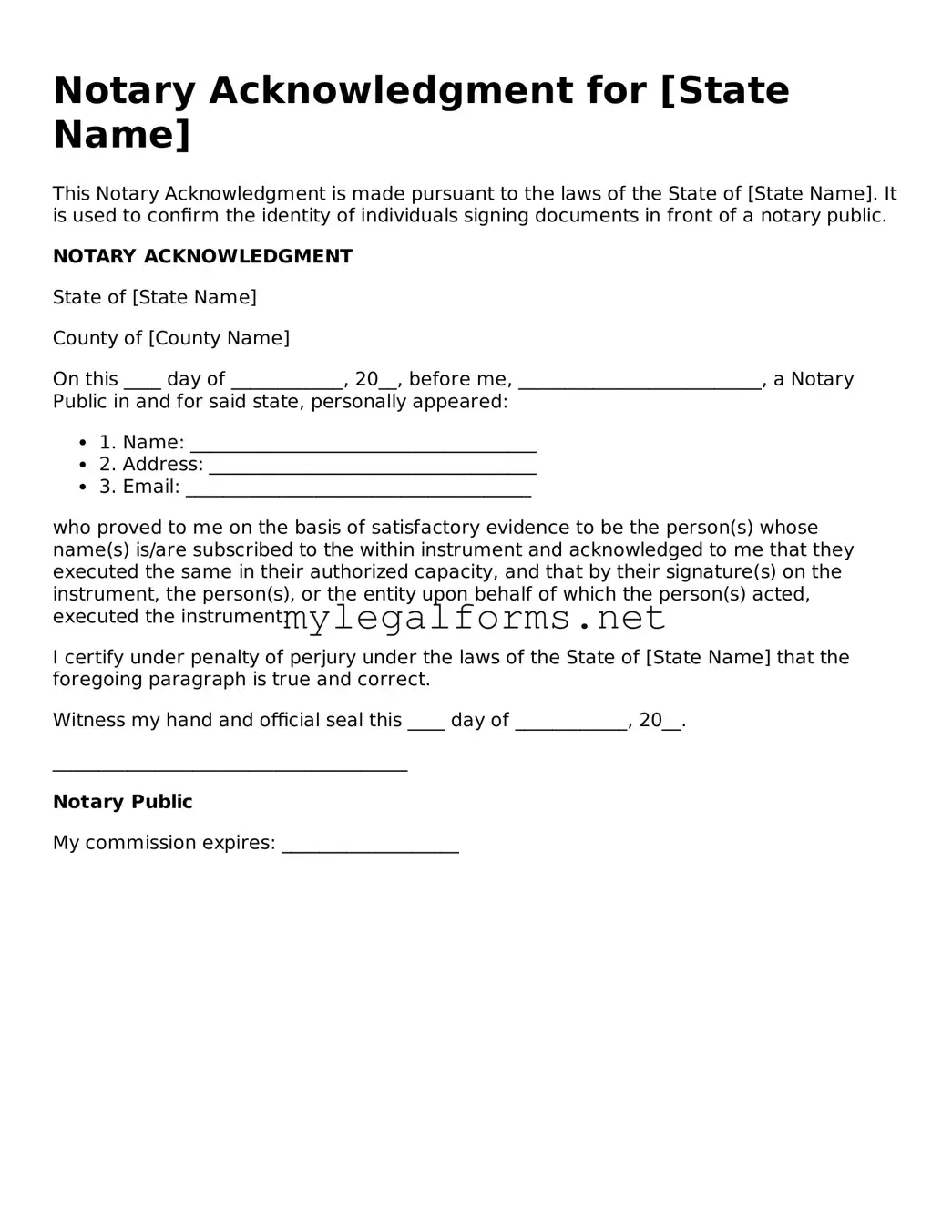Filling out a Notary Acknowledgment form can seem straightforward, but many people make common mistakes that can lead to delays or complications. Understanding these pitfalls can help ensure that your document is properly notarized and legally binding.
One frequent mistake is failing to include the correct date. It’s essential to note the date when the notary acknowledgment is signed, not the date the document was created. If the date is missing or incorrect, it may raise questions about the validity of the notarization.
Another common error is neglecting to provide the signer’s name as it appears on the identification. The notary must confirm the identity of the signer, and any discrepancies can lead to issues. Always ensure that the name matches the ID presented to the notary.
Some individuals forget to indicate the type of identification used. The notary needs to record this information in the acknowledgment. Without it, the form may be considered incomplete, which can undermine the notarization process.
It’s also important to ensure that the signer is present during the notarization. Some people mistakenly believe they can have a document notarized without being physically present. The notary must witness the signing, so make sure the signer is there.
Additionally, many forget to sign the document before the notary acknowledges it. The notary's role is to verify the signature, and if the document is not signed in front of them, the acknowledgment cannot be completed.
Inaccurate or missing notary information is another common mistake. The notary must fill out their details, including their name, title, and commission expiration date. Omitting any of this information can invalidate the acknowledgment.
People sometimes use the wrong form altogether. There are different types of notarization forms, and using one that doesn’t apply to your situation can lead to complications. Always check to ensure you have the correct form for your needs.
Not paying attention to the formatting can also cause issues. The acknowledgment should be clear and legible. If it’s messy or hard to read, it may be questioned later. Take the time to ensure that the form is neat and professional.
Lastly, some individuals overlook the importance of keeping a copy of the notarized document. Having a record can be crucial for future reference. Always make sure to keep a copy for your files after the notarization is complete.
Avoiding these mistakes can save time and prevent headaches down the road. By paying attention to the details, you can ensure that your Notary Acknowledgment form is filled out correctly and serves its intended purpose.
